Implementing Self-Organization with Talkspirit: Inside Hypoport’s Journey
.jpg)
Improving organizational transparency and efficiency is no easy feat. But what if there were a clear, proven way to meet this challenge? At Hypoport, the solution came through a bold decision: introducing self-organization—a system that empowers teams to structure themselves, make decisions independently, and adapt continuously.
This led them to discover Holacracy, a form of self-organization that replaces traditional job titles with clearly defined roles, responsibilities, and distributed authority. Adopting Holacracy required more than a cultural shift. It also meant finding a tool that could support and structure this new way of working. That’s where Talkspirit came in.
For Hypoport, a German network of tech companies that offer insurance, real estate and other finance services, this approach felt like a natural evolution. Founded in 1998, Hypoport is now made up of about 20 subsidiaries—each free to decide whether to adopt Holacracy. Today, 9 have done so, representing 42% of the company’s 2,000 employees.
Implementing Holacracy and Talkspirit’s governance solution was a way for Hypoport to achieve its dual purpose: fostering a thriving, empowering workplace, while ensuring financial security for its customers. To understand how these two work together to support Hypoport’s mission, we spoke with Björn Schneider, Holacracy and Agile Coach. Here’s his take on how the transformation unfolded.

How Our Journey Toward Self-Organization Began
"Agility has always been part of our DNA at Hypoport. Back in 2005, our IT department was already working with Agile frameworks like Scrum and Kanban. These practices gave us more flexibility—but over time, we realized they weren’t enough,” explains Björn Schneider.
“In 2015, we made a key decision: to make self-organization a guiding principle for all Hypoport companies. We believed that by empowering teams to organize themselves, we could create more resilient and adaptive organizations.
But as we rolled this out, it became clear that some subsidiaries needed more than Agile rituals. They needed a structured framework specifically designed for self-managing organizations.
That’s when Holacracy came into the picture. Some of our internal coaches already had experience with this method. Thanks to them, we discovered how Holacracy could support teams by improving role clarity and decentralizing decision-making—everything we were looking for to take self-organization to the next level.
We officially started implementing Holacracy in 2018. But we knew we couldn’t do it without the right self-management tool. Talkspirit quickly stood out as the ideal solution. It provided exactly what we needed: a secure, GDPR-compliant governance platform based in Europe. It also turned out to be more cost-effective than Glassfrog, the other tool we had considered at the time. And most importantly, it gave us the structure we needed to practice Holacracy.”
Implementing Holacracy and Talkspirit at Hypoport
A Transformation That Started at the Top
"The transformation didn’t happen overnight. We started small—with a pilot phase involving only the management board of one Hypoport company. For nine months, they tested Holacracy and Talkspirit together. They defined roles, held structured meetings, and got a real sense of what it means to work in a self-management framework.
That first test was a success. It gave us the confidence to roll out Holacracy in the rest of the organization. What helped was that employees had already started to notice this new way of working. There was genuine curiosity, and that made the transition smoother.
We began organizing our business units into circles—staying close to the structure we already had before Holacracy. Then we encouraged teams to hold governance meetings so they could suggest changes directly at their level. That’s where self-organization truly begins: when people feel empowered to shape the structure they work in,” says Björn Schneider.
Also read: How Great Place To Work Implemented Self-Management Using Talkspirit
A Choice, Not a Mandate
"One of the key principles of our rollout was freedom of choice. No Hypoport company was ever forced to adopt Holacracy. Each subsidiary had the autonomy to decide whether they wanted to embrace it.

The implementation process is always the same: first, a pilot with the management board—now shortened to three months. If the board is convinced, they present their experience to the rest of the company. In most cases, this gets everyone on board.
After six years, 9 out of our 20 subsidiaries have chosen to use Holacracy to support their journey toward self-organization.
We follow the method by the book, with no custom tweaks. That level of structure works well for some, but not all. Some companies feel Holacracy is too rigid. They prefer sticking to their own hybrid models, which combine Agile practices with pieces of Holacracy—even if they don’t call it that. And of course, transformation takes time and resources, which can also be a barrier."
Training: The Cornerstone of Adoption
"Practitioner training has been essential to embedding Holacracy and Talkspirit across Hypoport. After learning from external partners like HolacracyOne, Dwarfs and Giants and Xpreneurs, we built our own in-house program to support adoption.
New employees start with a series of onboarding videos to understand the basics of Holacracy. Then they join a ‘taster workshop’—a hands-on training session where they work in a fictional company we created on Talkspirit. Each person plays a role and has to process tensions in simulated tactical and governance meetings. It’s a fun and effective way to experience self-organization in action.

We also run specialized training for facilitators and lead links. Facilitators take part in six half-day sessions over three weeks and must run several meetings to apply what they’ve learned. And lead link training is delivered in a focused two-day workshop.
Recently, we added a self-study video course for secretaries to help them better understand their role, both during and between meetings. We’re also preparing a training program for future Holacracy coaches, who will help reinforce the practice of self-management throughout the company.”
Also read: How QoQa Managed to Successfully Implement Holacracy Using Talkspirit
Overcoming Implementation Challenges
Holacracy Isn’t Easy—And That’s Okay
"Let’s be honest—Holacracy isn’t simple. It comes with a long list of principles, rules, and a constitution that’s not exactly easy reading. For people who don’t have the time to practice regularly, it can be a real challenge to get comfortable with the methodology.
To make things easier, we’ve built a strong support system combining training, workshops and coaching. All of this helps make Holacracy more accessible and less overwhelming."
It’s a Journey, Not a Destination
"Like any transformation, implementing Holacracy takes time. Some circles still struggle to fully understand the methodology, and their level of maturity isn’t quite there yet. But that’s part of the process—it happens in every large-scale change.
The key is to keep the momentum going. We work hard to keep self-organization alive as a topic, and to encourage teams to continuously reflect and improve their practices.
To support that, we’ve created a dedicated workshop where people can share the challenges they face with Holacracy and explore solutions together. For example, one common issue we see is tactical meetings where no one brings up any tensions. Well, that’s exactly the kind of situation we address during the workshops!
We also offer meeting shadowing. Teams invite me to sit in on their governance or tactical meetings, and I provide feedback afterwards. It’s a simple but powerful way to help teams grow more confident and improve their use of Holacracy."
Bringing the Human Back into the System
"Holacracy is often criticized for being too rigid or impersonal, as it places a strong focus on roles and structures—but not enough on people.
That’s why we decided to complement it with a different lens: the 'Language of Spaces.' This methodology helps us differentiate between organizational processes and the human experience by framing them through the concept of ‘spaces’. At Hypoport, we work with the four key spaces defined by the Language of Spaces: operational, governance, tribe, and individual. Each one affects the others, and together they help us maintain a more balanced and holistic approach.

For us, this was a way to bring more humanity into Holacracy, and to ensure that while we focus on structure, we never lose sight of the people behind it,” points out the Holacracy and Agile Coach.
How We Use Talkspirit to Power Self-Organization
"Today, we use just about every feature Talkspirit has to offer. It’s become our go-to platform for enabling self-organization at Hypoport.”
Supporting Day-to-Day Holacracy Practice
“We run all our governance and tactical meetings directly on the platform. We also use it to create our OKRs (Objectives and Key Results), organize projects and tasks, and document roles, responsibilities, processes, and policies for each Hypoport company.
Over the last month, for example, we:
- Created 110 meetings
- Logged 454 tensions, and brought 450 of them to meetings
- Submitted 113 proposals asynchronously
- Added 1,043 tasks to project boards
- Edited 69 roles, and added 81 new ones
This goes to show how deeply integrated Talkspirit is in our way of working.
The org chart feature is especially helpful. It gives everyone visibility into the structure of the entire organization, so they can quickly understand who’s responsible for what, and easily navigate between roles and circles.
That said, usage can vary from one subsidiary to another. Since each company has the autonomy to decide how they want to organize, not every team uses the same features. For example, smaller teams really like the projects app, while others prefer managing projects through different tools. And that’s perfectly fine—it’s part of what self-organization is about."
Enabling Cross-Company Collaboration
"When we work on transversal projects involving multiple Hypoport companies, we create a dedicated circle on our organizational chart. Everyone involved in the project—regardless of which company they belong to—is invited to join.
This allows us to clearly define roles, distribute responsibilities, and ensure everyone has access to the same data. We can hold cross-company meetings, track progress in real time, and coordinate much more effectively,” says Björn Schneider.
How Holacracy and Talkspirit Transformed the Way We Work
Clarity and Efficiency at Every Level
"What I’ve observed is that when self-organization is supported by both a methodology—Holacracy—and a dedicated tool—Talkspirit—organizations become much more mature in how they work. The combination of a clear governance model and a structured digital environment helps teams operate with clarity and efficiency.
.png)
People use the language of the methodology every day—terms like ‘tension,’ ‘proposal,’ or ‘governance’—and everyone knows exactly what they mean. The process for handling tensions is also well understood. For example, people know how to separate a clarifying question from a reaction. It might seem like a detail, but it has a huge impact on how we collaborate.
Talkspirit plays a big part in this. It gives us the structure to run meetings smoothly, improve role clarity, and make information accessible to everyone. When people know how the process works, what their role is, and where to find the right information, everything speeds up. Decisions are faster, meetings are more productive, and people spend less time on coordination—and more on their actual work.”
Also read: Benefits to Switching to Holacracy and How to Ease Into It
From Purpose to Impact
"To move from purpose to impact, you need alignment. Holacracy helps us articulate and clarify purpose—not just at the company level, but for every role in the organization.
With Talkspirit, we’re able to make that purpose visible and actionable. Roles, accountabilities, and OKRs are all documented in one place. That means people not only understand why they’re doing something, but also how it contributes to the bigger picture.
This shared alignment, combined with the operational clarity that Holacracy and Talkspirit bring, is what allows us to move from intention to real outcomes and truly strive toward self-organization," explains Björn Schneider.
What Success Looks Like in a Self-Organizing Company
"Even after six years, we’re not perfect practitioners of Holacracy—and that’s okay. What really matters is that most people at Hypoport much prefer it over the traditional management hierarchy we had before.
One of the best ways to measure success in a self-managed team is to ask: could we remove Holacracy now without disrupting the organization? If the answer is no—if people feel they truly need it—then we’ve succeeded. That’s the case for many of our teams today.
Of course, getting everyone on board isn’t easy. But after just two or three years, over 75% of employees didn’t want to go back to how things were before. And to me, that’s already a big win,” reveals the Holacracy and Agile Coach.

What We’ve Learned from Implementing Holacracy
"If there’s one thing we’ve learned on our journey toward self-organization, it’s that success starts at the top. When the management board is fully on board—when leaders believe in the process and lead by example—adoption across the organization becomes much smoother.
Another key learning is the importance of building internal expertise. Every company should have at least one or two coaches who really understand Holacracy and can support others. While external consultants can help get things off the ground, they’re usually only there for the short term. If you want to see Holacracy grow and take root over time, you need your own people to carry it forward.
And finally, it’s essential to stay close to what’s happening on the ground. Keep in touch with teams, listen to their challenges, and help them continuously improve. Holacracy isn’t a one-time implementation—it’s an ongoing practice. That’s why regular contact and continuous support are so important to make self-management work,” adds Björn Schneider.
A Final Word
At Hypoport, Holacracy and Talkspirit work hand in hand to make self-organization a reality. Holacracy brings the structure—clear roles, distributed authority, and purpose-driven work. Talkspirit brings the tools to put it into practice—managing meetings, documenting processes, and keeping everyone aligned.
The result? A more agile, transparent, and efficient organization where employees know their roles, decisions are made faster, and teams collaborate better. If you’re aiming for the same transformation, know that it’s possible—with the right method and platform.
👉 Curious to see how it could work for you? Schedule a demo with our team and explore how Talkspirit can support your transition to self-organization. For personalized guidance, you can also connect with our network of Agile coaches.
📘 Want to learn more before taking the leap? Download our Ultimate Guide to Organizational Models to explore Holacracy in depth, see how others have implemented it, and discover other models to consider.
Access the White Paper
In our white paper, “The Ultimate Guide to Organizational Models,” you’ll receive:
- a comprehensive overview of innovative organizational models (like Agile, Teal, Holacracy, Constitutional Management, and more)
- testimonials from pioneer organizations that have successfully adopted it
- best practices for choosing, implementing, and measuring the effectiveness of our model
- digital tools to facilitate your transition






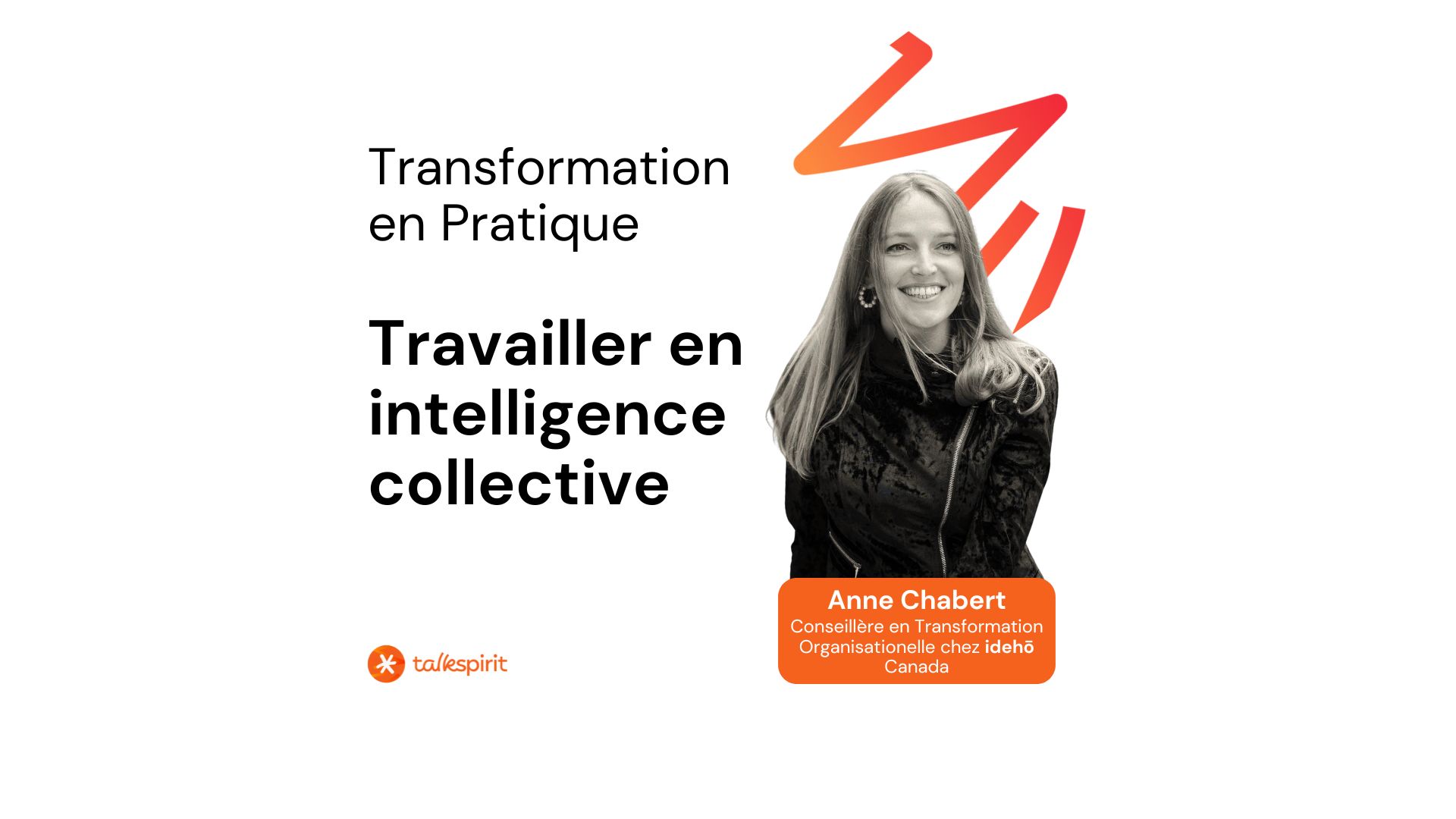

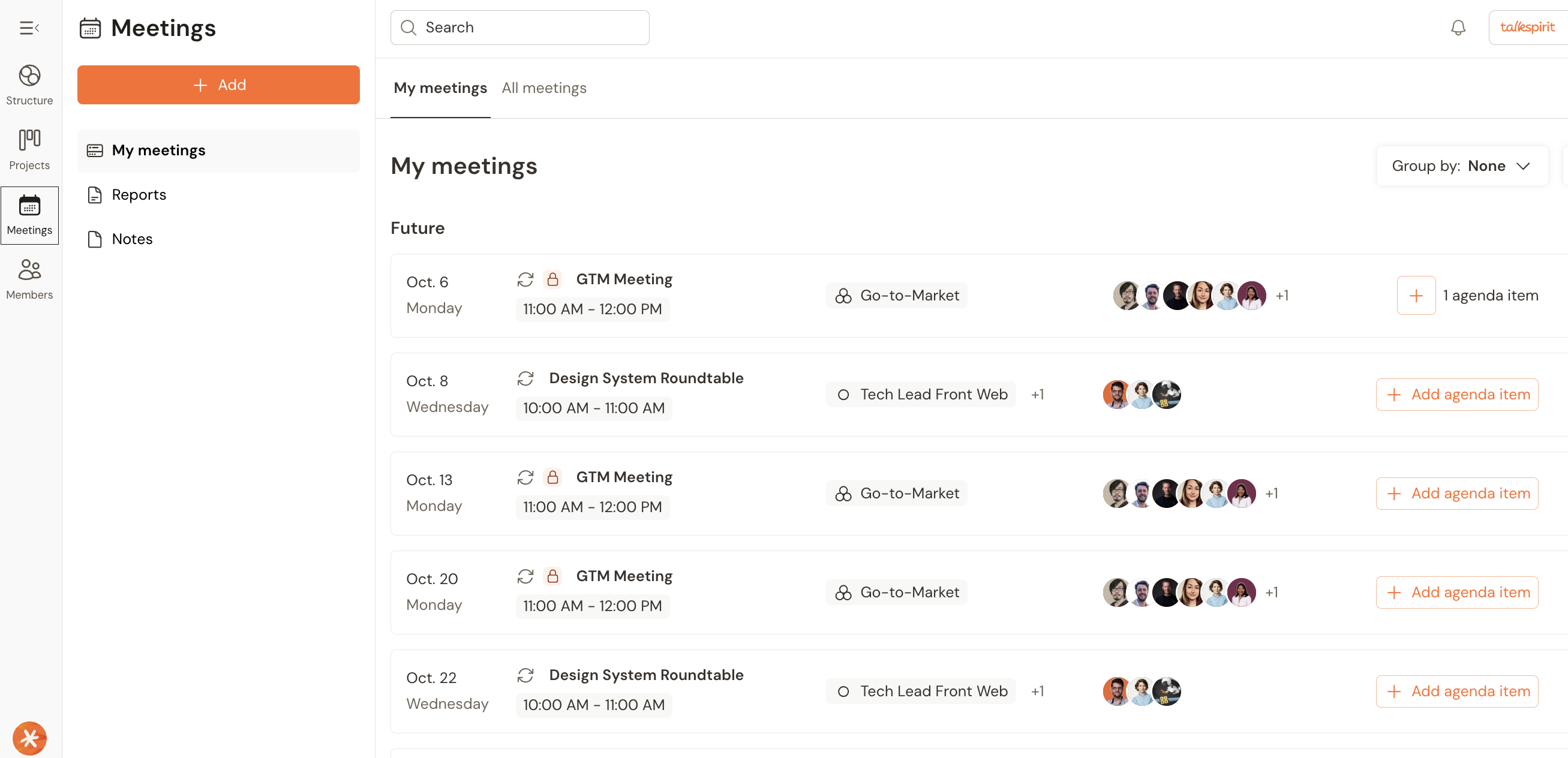



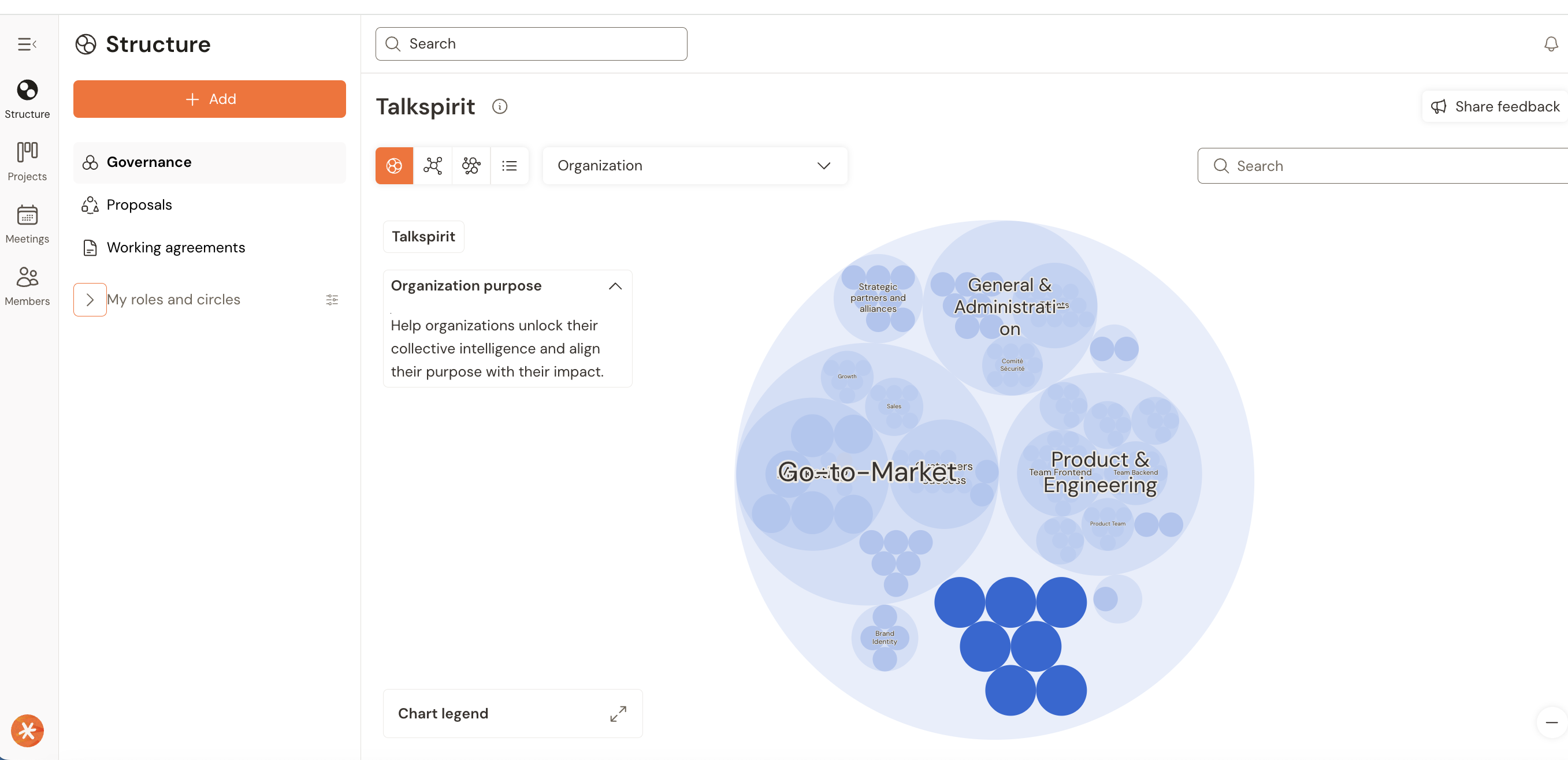
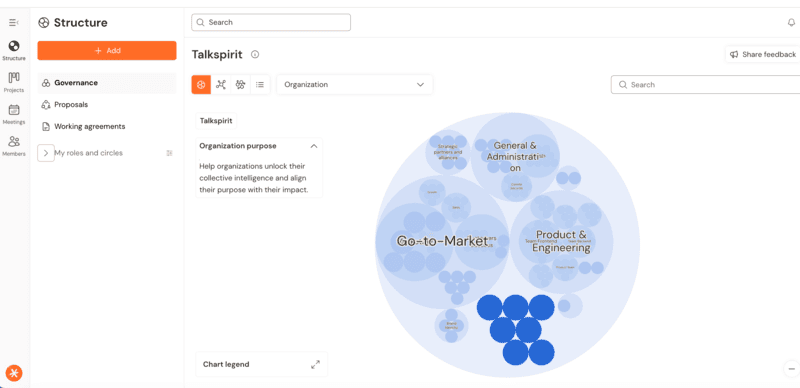

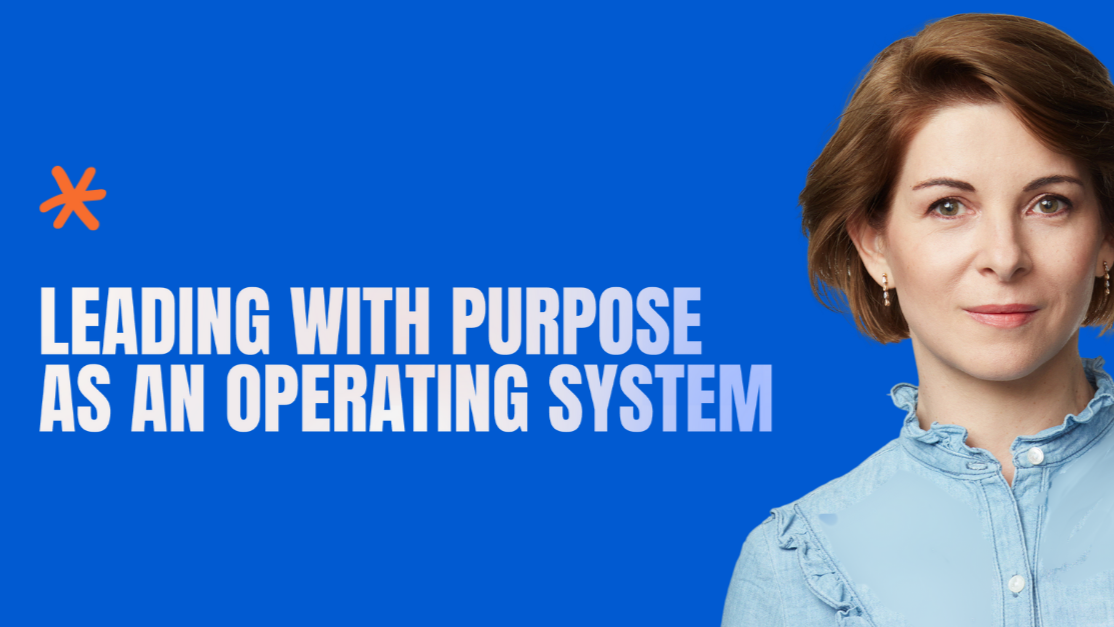







.jpg)





.jpg)
.jpg)







.jpg)


.jpg)

.jpg)


.jpg)











.jpg)




.jpg)



.jpg)

.jpg)



.jpg)








.jpg)


















.jpg)

.jpeg)